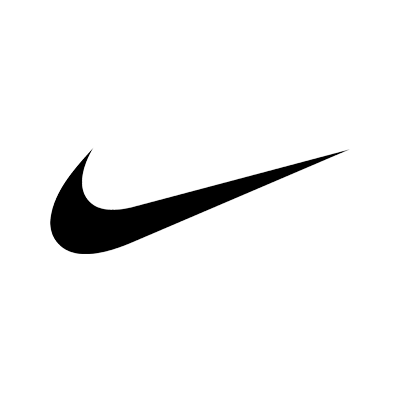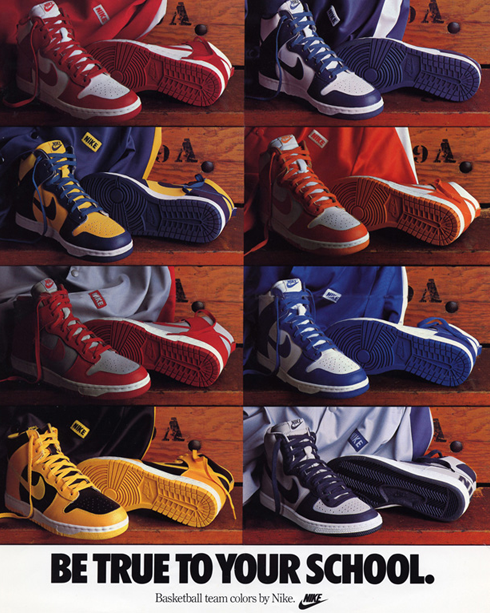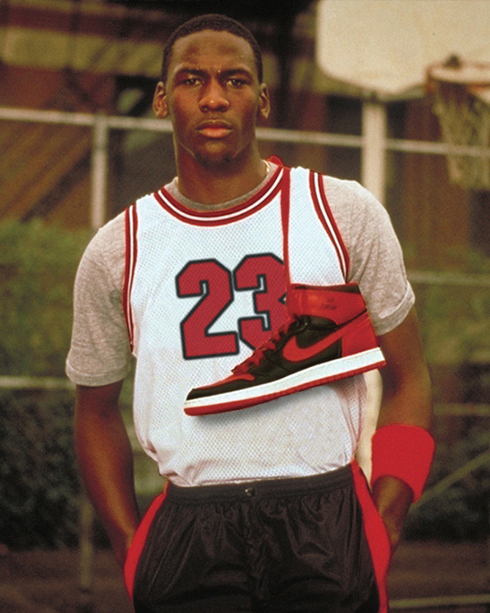Nike
Air Humara
Built for the adventurous soul.

A lofty ambition and a humble employee
As far back as the early 80s, Nike was beginning to expand beyond the athletic shoes that had made the company so successful in its first decade. A dedicated hiking division set up in 1981 allowed the brand to experiment with more rugged shoes, forming the foundations of Nike ACG (All Conditions Gear) – a part of the brand focused on creating functional outdoor apparel. Throughout the 1990s, Nike diversified even further, and by 1996, its designers were able to combine their expertise in performance runners with the more recent interest in all-terrain footwear to create a series of trail running shoes, which the brand had a particular affinity for in the late 90s. Despite having a team of highly qualified footwear experts at its disposal, Nike took an unconventional route, enlisting a young designer with a varied work history but virtually no experience of designing shoes to produce the most functional and technically adept trail runner possible. The move paid off as this humble employee ended up creating two of the most timeless trail running silhouettes in the brand’s history: the Air Humara and its successor, the Air Terra Humara.
A natural born designer
Peter Fogg always seemed destined to become a designer. The son of a shop teacher and an art teacher, he naturally gravitated towards drawing from a young age and took a number of design-based classes at school. During one of these, Fogg’s professor observed how he enjoyed sketching cars and suggested that he try out tesseral design – a technique in which different shapes are placed together in the manner of a mosaic to create a pattern without any gaps in it. The professor directed Fogg towards the design courses at San Jose State University, where he went on to complete a degree. This led the young designer into a string of different jobs as he honed his craft by working on a diversity of items, from snorkels to electronic bridge games and even the interior of a Boeing 737. However, while working on this aircraft, he had some serious health issues and left work to focus on his recovery.
Returning to work
Prior to his illness, Fogg had begun to worry that his career wasn’t going anywhere, so when he returned to the field of design after several months of treatment, he used the moment as an opportunity to make a change. He got in touch with Dave Schenone, a classmate from his time at San Jose State who had become the Design Director in charge of Nike’s footwear designers. Schenone told him that they were hiring and advised him to think about applying for a position. Fogg took his friend’s advice and, following several postponements which allowed him to practise drawing shoes and rollerblades – something Nike was working on at the time – he got the chance to show off his skills at interview. His practice had clearly been worth the time as, although the closest thing to a shoe he had ever designed was a scuba diving boot, Fogg was given the job.
A challenging assignment
On arriving at Nike, Fogg was assigned to the running division. Runners had been at the core of the company’s success since Bill Bowerman designed the waffle sole to enhance the grip on track shoes back in 1971, so it was an important appointment that came with pressure and expectation. Indeed, the transition was not so easy for Fogg as he went from being part of a large team responsible for long-term, engineer-driven aeroplane design projects to working in a very small team or even alone on performance- and aesthetic-focused footwear. Things were made even more challenging by Nike’s growing success as, by the time Fogg came on board in the mid-90s, the company’s executives had stopped referring to it as a simple shoe manufacturer and instead were emphasising its design and marketing expertise. Around that time, they had noticed a need for good-quality trail shoes amongst the running community as more and more people were spending time out of the city in nature, but other popular brands were already active in the space, so they needed to create something to set them apart from the competition. In line with these ambitions, Fogg was asked to make a technically proficient trail running shoe that showcased the brand’s ability to craft hyper-functional footwear with an appealing aesthetic.
The Tarahumara
Relishing the task, Fogg decided that his best course of action was to have fun with the designs. He drew on things which interested him, including his own fondness for trail running and his days riding dirt bikes in the mud. Another of his most important influences was the Tarahumara – an indigenous group from the rugged canyon country of northern Mexico whose flat sandals had already inspired the 1991 Nike Air Huarache. Historically, Tarahumara settlements were situated so far apart that their people would run between them for up to 200 miles over a period of days through tough, rocky conditions to relay news. Their own word for themselves, Rarámuri, even relates to their running heritage, and long-distance endurance is an integral part of their culture.
A rugged design
Fogg took the word “Humara” from Tarahumara and gave it to the shoe, forging a design that embodied the athletic, hardy nature of these people by moving away from the heavy, clunky trail shoes that were typical for the time. Instead, he crafted something with more of a running focus, making a lightweight, functional model with a comfortable fit that was still hard-wearing, durable and able to withstand the elements. He gave it a chunky, high-traction outsole with bidirectional grip pads on its forefoot and heel to support the wearer whether trekking up or downhill. Flex grooves in its surface maintained a good level of manoeuvrability, and the use of a Zoom Air unit in the forefoot and encapsulated Air in the heel made it incredibly comfortable, no matter if stepping over rocks, rubble and roots or walking along the streets of a city. Meanwhile, a diamond-shaped trail running emblem below the arch of the foot acted as the centrepiece for the sole unit, proudly announcing the shoe’s purpose. Like the outsole, the exterior of the midsole was optimised for tough conditions as it was coated in a unique textile wrap inspired by the midsole of an earlier Nike cross-training shoe that protected it from abrasions – the first time something like this had been used on a trail runner. Fogg took cues from camping tents, webbing and climbing shoes when designing the upper, which was built using a mixture of textile and mesh for durability and comfort. This also gave it a sporty aesthetic and helped it to fit softly around the foot, while a rubber toe cap protected the front from scrapes and cuts. Water-repellent properties allowed it to withstand wet conditions, and its distinctive webbed lacing system helped to keep the foot secure during vigorous movements.
The Terra Humara
With such a raft of supportive features, many thought that the Air Humara was part of Nike’s ACG (All Conditions Gear) range when it was released in 1997. Indeed, it could fit in well with the series, but its main purpose was trail running and, as Fogg himself has stated, such designs must be great running shoes before anything else, so it remained in Nike’s running division. Despite this, it inspired future ACG designs and is often considered to be a part of the ACG line. The same is true of Fogg’s next sneaker, the Air Terra Humara, which arrived in the winter of 1997. Like its predecessor, the Terra Humara came with a strong, grippy outsole whose black colouration was inspired by the original Air Max 95 and a midsole containing both Zoom Air and encapsulated Air. A set of circular windows in the heel put the airbag on display, making the Terra Humara one of the first trail running shoes to have visible Air. In order to prevent punctures while out in the wild, the windows were set back from the surface of the midsole, with those on its medial side made slightly smaller to provide enhanced stability there. For its upper, Fogg took inspiration from a motorcycle to bring a feeling of safety and stability to the design. Visually, its flanks resembled a bike’s wheel, the curved overlay on each one based on a brake disc, with a series of spoke-like fingers radiating out from it to form the shoe’s lacing system, while the circular Air windows in the midsole acted as a further reference to this inspiration motorbiking.
Inventive advertising
The Air Terra Humara was even more deeply connected to Nike’s ACG collection than its predecessor was, the name Terra being taken from 1991’s Air Terra ACG, which acted as the foundation for the brand’s future trail running shoes. It also benefited from the same playful and inventive advertising that the ACG line had become known for. One poster from the time of its release included a poem written from the perspective of the shoe. It listed the Terra Humara’s rugged features, stating things like “I’ve got an aggressive lug outsole that loves to hang on”, “my forefoot and heel Air-Sole units are cushy” and “water doesn’t enjoy the company of my non-absorbing materials”. It finished with the lines “I’m the Air Terra Humara. And names can’t hurt me either.”
A celebrity favourite
The first colourways of Fogg’s Air Humara and Air Terra Humara were based on mountain bikes and other outdoor apparel, employing dark, earthy tones that helped to hide the dirt picked up when out in the elements. While this gave them an appealing aesthetic, both models were primarily functional in their design, so it was a surprise when they began to be adopted as casual shoes, the Terra Humara in particular making a name for itself amongst celebrities as it was worn by music stars like Courtney Love and Brittany Spears. No one was more surprised about this than Fogg, who, being new to the footwear industry, had never spoken to non-runners about his creations since he had expected only trail runners to be interested in buying them. The designer was even more taken aback when he was approached by Vogue for an editorial piece about the trail running shoe turned lifestyle sneaker. Published in May 1998, it delved into Fogg’s design process, presenting his unconventional background, his eccentric ideas and his prolific creative output. It also revealed another inspiration for the shoe – the inner workings of a Swatch watch – and highlighted the fact that the Terra Humara could be seen on famous feet all over New York and Los Angeles. This article helped to demonstrate that Fogg could have a successful career as a footwear designer, and Nike began to put more trust in him going forwards. Beyond this, it was seen as a validating moment for Nike as it proved the brand’s design credentials, showing that they had the necessary expertise to effectively blend fashion and function.
A fortunate intervention
This unexpected attention made Fogg’s trail runners incredibly successful in the late 90s and early 2000s – a fact which is even more remarkable considering that the Humara almost failed to make it past the development phase. During the early design process, Fogg was told that he should stop working on the shoe as the developer did not like it. Fortunately, Fogg’s marketing manager had faith in the Air Humara, standing by its design and ensuring that it was passed for production. If this hadn’t happened, there would have been no Humara or Terra Humara, and Nike’s trail running shoes would have progressed in a completely different direction. Considering the popularity of both silhouettes, it is almost unthinkable that this could have happened, especially given their long-running success, which has seen them fade and return a number of times in the decades since.
Returning for the new millennium
While the early years of the Humara were punctuated by celebrity appearances, it was collaborations that brought about its long-term success. In 2002, the formidable HTM team, which brought together Fragment Design founder Hiroshi Fujiwara, visionary designer Tinker Hatfield and future Nike CEO Mark Parker, delivered two lifestyle-focused Terra Humara colourways with suave leather uppers that helped the silhouette to find popularity in the new millennium. This was followed in 2006 by a more earthy Terra Humara inventively known as the Trumara after its collaborative partner: streetwear and sneaker boutique True. Nike then rereleased this laser camo colourway in 2009 to honour the San Francisco-based brand’s 13th anniversary, and the shoe’s fanbase continued to grow.
Collaborations and comebacks
All of this served to carry the Humara name into the 2010s, when renowned sneaker expert and enthusiast Gary Warnett described Peter Fogg as one of Nike’s greatest designers. However, it was 2017’s Supreme collaboration that really supercharged the resurgence of the Air Humara. The skateboarding lifestyle brand released four colourways of the Air Humara 17, three in vibrant tones of Blue Lagoon, Action Green and Fire Pink, and the fourth a sleek Triple Black version. Each was presented in the traditional build, with 3M reflective materials added to the toe and heel to make them even more practical. This precipitated a whole new range of Humaras as the trail runner took advantage of the growing trend for functional outdoor shoes, culminating in another collaboration in 2022. For this one, Nike teamed up with luxury French fashion label Jacquemus to produce two suave, leather-clad editions – one a graceful Light Bone, the other a rich Ale Brown – with a minimalist appearance exemplified by the diminutive golden swooshes adorning their flanks. The vibrant Pink Flash colourway followed these, its all-pink upper covered in mesh and decorated with the same elegant branding effects as the previous two Nike x Jacquemus designs. Then, in 2023, the Air Terra Humara made its own popular return via a collaboration with Undefeated. The sneaker store and apparel brand lovingly recreated the original shoe in two colourways: Black and Archaeo Brown, both of which incorporated their own reflective details. The rubber heel counter and toe overlay exhibited a rough, grid-like texture somewhat similar to that of a motorcycle tyre in a nod to Fogg’s original inspiration, and the brand’s Play Dirty tagline appeared in the same place as the logo on the HTM sneakers, which had been stocked in the first Undefeated store when it was founded in 2002. Two follow-up colourways came in early 2024 – the strikingly turquoise Light Menta and the refined Cargo Khaki – both of which also contained these unique design details.
An outstanding legacy
Although the Nike Air Humara was only the second shoe Peter Fogg had ever worked on, it was a resounding success that broadened Nike’s appeal, beginning many decades of prosperity for both brand and designer. After 6 years in Nike’s running division, where he produced other great trail runners like the Sertig and the Albis, Fogg went on to work in the ACG, sportswear and basketball departments, proving his versatility by creating iconic designs like the 2002 Pegasus and the 2013 Hyperdunk and becoming one of the brand’s most storied designers in the process. Nevertheless, the Humara and Terra Humara remain some of his best ever silhouettes thanks to their impressive build, which invites the wearer to seek adventure. Today, their legacy lives on as their cult following of passionate sneaker enthusiasts and trail runners continue to collect them, partly for their technical abilities and their fashionable aesthetic, but also for the captivating story of their legendary creator.


